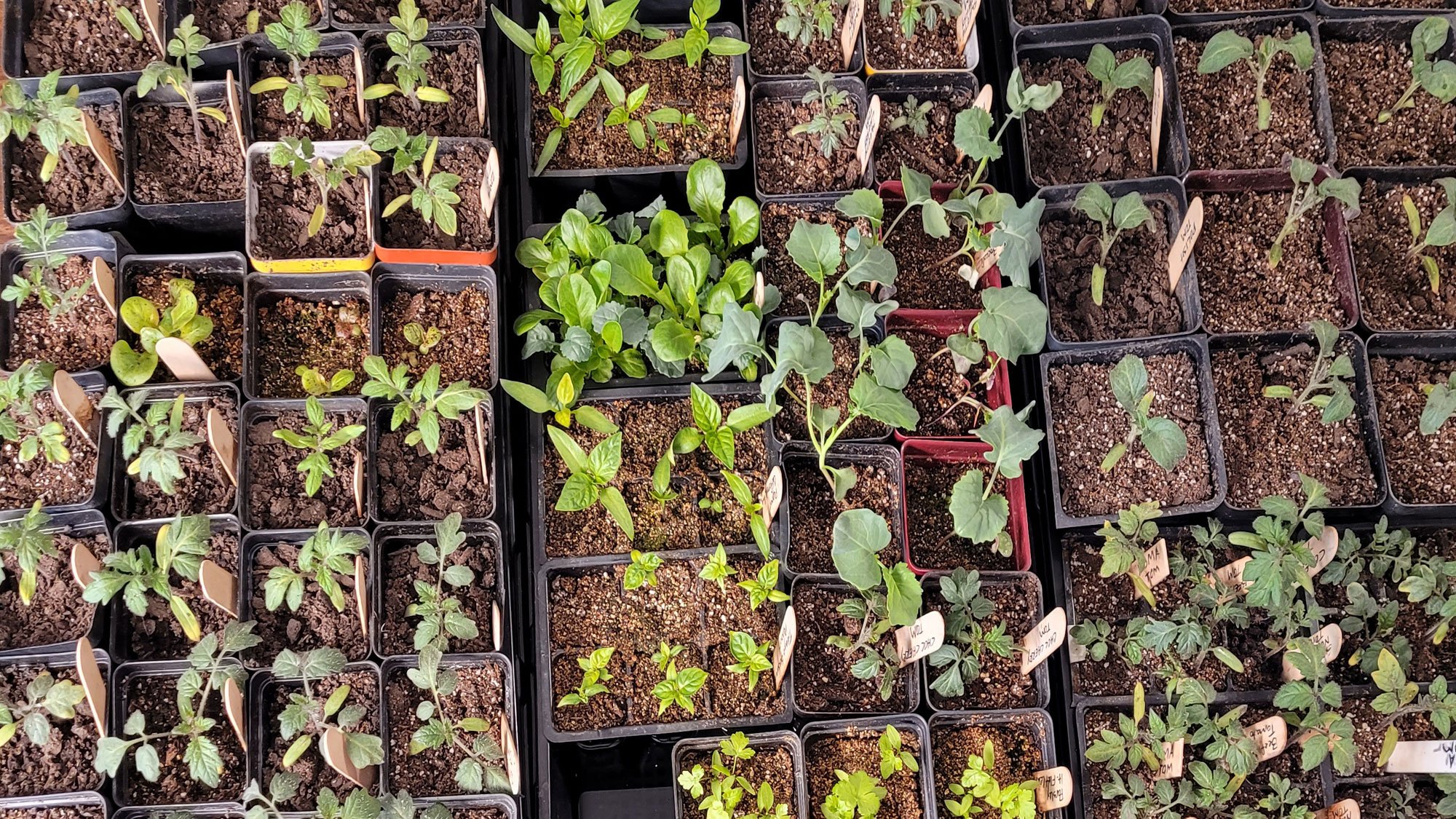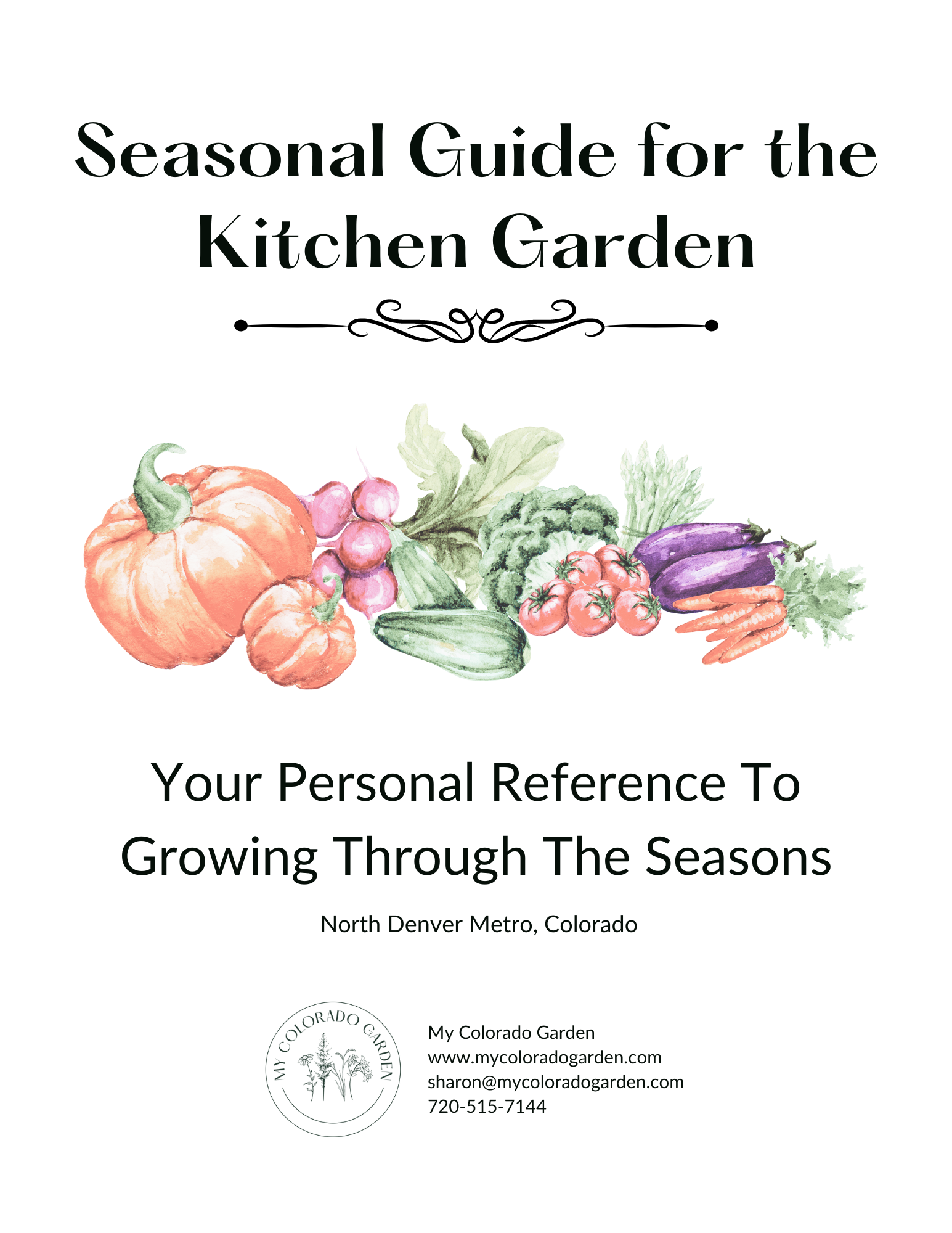Indoor Seed Start Timing
As an affiliate, I earn a commission from product sales completed through some of the links below. This is at no additional cost to you. Please know that I only recommend high-quality products that can stand up to the challenging Colorado climate.
Vegetable seed starting indoors in Colorado is a tricky business and the focus of debate between gardeners every year. If you start too early, you run the risk of overgrown, leggy plants. If you start too late, there may not be enough time in the growing season to reap a harvest. The crazy Colorado weather, specifically the last frost date and the first frost date, are at the root of this uncertainty.
This post will help you understand how to accurately calculate the best date range for indoor seed start times in your location. We’ll focus on the Front Range Urban Corridor but here’s a CSU Extension resource for the high-altitude vegetable gardeners out there: Vegetable gardening in the Mountains.
NOTE: Timing is different when using season extenders such as frost cloth, low tunnels, etc. This post assumes that no season extenders are being used.
DAYS TO MATURITY
Days to maturity is how many days until the plant produces a harvest. It’s often listed on the seed packet itself or can be found online at seed suppliers. Keep in mind that the number of days to maturity listed is a best-case scenario and may or may not be accurate to your specific growing conditions. Also, the number of days to maturity could be from either seed sowing or transplant so also look for that information.
For example, on the front of this cherry tomato seed packet, it states 65 days from transplanting. That’s when you’ll start harvesting tomatoes under ideal conditions, but it is an estimate and can vary.
In the Colorado front range urban corridor, there are roughly 150 frost free days which make up our main vegetable growing season. This number is calculated by counting the number of days between the average last frost date in the spring and the average first frost date in the fall. (See next section for ways to determine frost dates.)
Some winter squashes, large pumpkins and other vegetables have a longer growing season (ex 100 days or more). In addition, an unexpected late spring cold snap or early fall cold snap shortens the growing season even further. Keep this in mind, along with days to maturity, when choosing which seeds to sow.
DETERMINE LAST FROST DATE
It’s so easy to determine the last frost date! All you do is plug in a zip code on a website, right? Not so fast! Using my zip code on the following websites, I get these different dates:
Plantmaps.com - May 21 - May 31 (no percentage stated)
Almanac.com - May 7 (30% chance of frost after that date)
Garden.org - May 15 (30% chance of frost after that date)
According to these numbers, I can have a last frost date any time in May! But this is simply a general history of the weather in my approximate location. That’s why it’s just one factor in determining when to plant the garden.
Another is to use the history of your specific microclimate. If you take photos or note in a journal any unusual weather events, that gives specific historical data for your location. This will benefit you in the coming years. Looking at recent years in my camera roll and garden journal, I had snow in May on the following dates: May 18, 2017, May 21, 2019, and May 20, 2022.
Combining the date ranges provided by Plantmaps.com and Garden.org and documented experience, I use a last frost date range of mid-May to the end of May. Then, I watch the extended weather forecast starting in early May to get a better idea of when to plant out into the garden.
I’m always ready to cover if I plant out before the end of May because anything can happen with Colorado weather.
Tomato plants covered with buckets.
May 20, 2022
Dividing Vegetable Plants into Seasons
To better understand when to plant vegetables in the garden we’ll divide them into Cool, Warm, and Hot Season Plant categories.
Cool season plants will tolerate cooler temperatures, frost, and possibly freeze/snow.
Warm and Hot season plants will not tolerate frost at all.
Hot season plants prefer even warmer growing conditions, for example above 50 deg F.
I’ve done the research for you in my Free North Denver Metro Growing Guide. This guide lists which vegetables are in which category and details when to grow them in the garden. If you are not in the North Denver Metro area, you will still benefit from the categories but update the timing aspect.
Click the button below to get your free Seasonal Guide for the Kitchen Garden!
WARM & HOT SEASON PLANTS
SEED PACKET
Often, seed packets have sowing information on the back. For example, this cherry tomato seed packet gives detailed information. It recommends starting indoors 4-6 weeks before transplanting. It also states when to transplant (usually 1 to 2 weeks after the last frost date).
Using a frost date of May 15 and a calendar, I calculated the following. In my experience, this is too late for sowing tomato seeds because of our shorter growing season.
A transplant date of May 22-May 29
A seed starting date of April 17 - May 1 (by counting back 4-6 weeks).
However, I recently discovered that Johnny’s Selected Seeds has a very helpful interactive Seed Starting Date Calculator (pictured below). Inputting May 15 as my spring frost-free date, a chart shows when to start seeds as well as when to plant them out. This calculator seems more accurate based on what I’ve done in years past as noted in my garden journal. As you can see from the website screenshot below, tomatoes should be seeded 6 - 8 weeks before being planted out in the garden. The actual sowing dates for tomatoes according to Johnny’s Seeds are March 27 - April 17.
Keeping this information in mind, I look back at my garden journal and see that I had a great tomato year in 2022. That year, I sowed all tomato seeds on March 13 and planted them out in the garden on May 13th. Although it was a productive year, I struggled with having enough space indoors because they got so big. Some were starting to bloom already! Needless to say, perhaps they didn’t need to be sown quite so early. This year, I plan to sow tomato seeds on March 20th or even the 27th as Johnny’s Seeds recommends.
COOL SEASON PLANTS
Calculating the seed start date of cool season vegetables can be a little trickier if you want to have plants for the spring growing season. Starting indoors is sometimes recommended because seeds may not germinate at low temperatures outdoors. Waiting until the outdoor soil warms enough for sowing seeds risks the summer heat at the end of May.
Let’s use Lacitano Kale as an example to figure out seed starting for cool-season vegetables.
Seed Packet Example
Sow indoors 4 to 6 weeks before the average last frost date, which is April 3 - April 17.
There’s no instruction on when to plant out in the garden.
Johnny’s Seed Starting Calculator
Set plants out 4 weeks before the frost-free date (April 17th, in my case).
Calculating backward, the sowing date is March 6 - 20th.
Johnny’s Seeds has a much earlier sowing date for Lacitano Kale. This is a critical point with cool-season vegetables that can either bolt or turn bitter in hot weather. There needs to be enough growing time before the weather gets too hot.
Note that cool-season vegetables are not the same as all-weather vegetables. They can often tolerate brief cold or light snow that melts quickly. However, cover cool-season plants for extended cold snaps or snowfalls. More extended cold or snow may not kill plants, but will make existing greens soggy and not good for harvest (unless they are covered). Sometimes, I’ll harvest greens before a snowstorm, if possible, leaving the smaller leaves in place for growth later in the season.
Late May snow but the vegetable plants are protected with frames, buckets, and blankets.
As you can see, knowing exactly when to sow seeds is a combination of science, experience, and probability. Determine likely last frost date ranges by utilizing online sources and drawing upon your experience. Additionally, download the free Seasonal Guide to categorize vegetables into cool, warm, and hot season types and learn when to plant them. When the last frost date nears, check the weather frequently and be prepared for late snow. Doing this will set you up for successful planning and seed sowing!
Additional seed starting posts can be found here:







